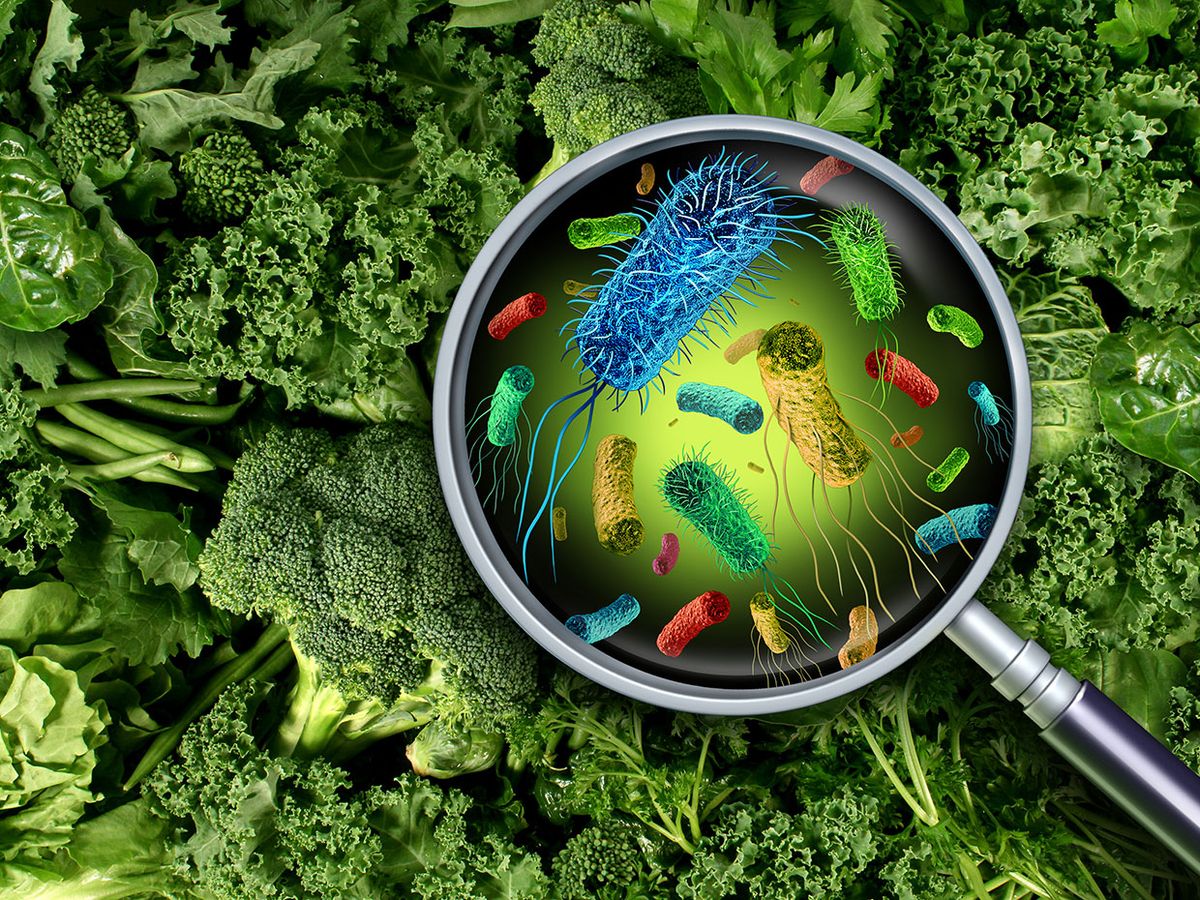THE INSTITUTEDuring a foodborne-illness outbreak, identifying the root cause of the contamination can be difficult. The food supply chain includes a lot of players—farmers, distributors, processors, packagers, and grocers—often from different regions or even multiple countries. Each business in the chain has its own private record-keeping system; some still use pen and paper.
An E. coli outbreak in the United States that began in April—the largest in more than a decade—came from tainted romaine lettuce that sickened more than 200 people in 36 states. It took government investigators two months to track the lettuce back to a grower in Yuma, Ariz.
Almost one in every 10 people around the world get a foodborne disease each year. Of those 600 million people, 420,000 die as a result, according to the World Health Organization.
IEEE and several other organizations are exploring how blockchain technology could track the source of an outbreak and help contain it. Rather than each company storing information in its own system, the businesses would contribute encrypted blocks of data to a distributed ledger that could be monitored and verified. Through data provenance, or proof of ownership, blockchain provides the ability to isolate where in the supply chain a problem occurred. This could lead to a more targeted recall process and create less risk for consumers and other stakeholders.
To help provide definitions and protocols for such a ledger, the IEEE Standards Association formed the IEEE 2418.3 Standard for the Framework of Distributed Ledger Technology (DLT) Use in Agriculture working group.
“With rising consumer consciousness toward food safety and food sources, DLT can play a vital role in delivering a new level of service to customers,” Maria Palombini says. She’s the emerging communities and opportunities development director for the IEEE Standards Association’s Global Business Strategy and Intelligence group.
IMPROVED RECORD KEEPING
For the most part, consumers have no way of knowing where their food comes from. In the case of the tainted romaine this year, the lettuce was supplied to restaurants and retailers through multiple sources.
“When the lettuce gets to the supermarket, the package notes its distributor, but neither the consumer nor the grocer knows whether the head of lettuce was grown in Arizona or elsewhere,” Palombini says. “That’s because there is a lack of visibility of the supply chain caused by data control and silos.”
Part of the problem with tracking, she says, is that many in the supply chain still keep only paper records. “This is generally true whether it’s flowers or food.”
Another advantage of a blockchain system over current databases, she says, is that it provides proof of ownership. Every food product would have some kind of identifier—a label, a bar code, an RFID tag, or a sensor—recorded in the ledger, making it easier to verify its source.
There are additional viable uses for blockchain technology in agriculture, Palombini says, such as combating the sale of counterfeit and low-quality seeds. Such seeds can fail to germinate or produce deformed plants, affecting crop yield. The ledger also could verify the source of specialized seeds such as non–genetically modified and organic varieties.
“Seed companies can put the origination of their stock on the blockchain so farmers and others impacted on the food value chain would be able to verify the source of seeds,” Palombini says.
NEW REVENUE STREAMS
DLT could provide innovative opportunities to help increase small farmers’ revenue and their access to capital. In general, small farmers lack the relationships and access to distributors and retailers to sell their excess inventory.
Farmers now can advertise their produce on blockchain exchanges monitored by verified wholesalers and distributors, according to Palombini. Once an exchange is fulfilled, the sale is documented. Not only does that eliminate food waste, it also could help farmers obtain loans, because they have digital proof of inventory and a tamper-resistant sales record.
“This opens new opportunities for growers, not only for increasing their revenue but also for obtaining financing to expand their farm operations—which is one of the biggest problems they face right now,” Palombini says.
To explain how distributed-ledger technology can help the food industry, the IEEE Blockchain Initiative is holding the Blockchain for Agriculture Forum on 28 and 29 November in Honolulu.
Kathy Pretz is editor in chief for The Institute, which covers all aspects of IEEE, its members, and the technology they're involved in. She has a bachelor's degree in applied communication from Rider University, in Lawrenceville, N.J., and holds a master's degree in corporate and public communication from Monmouth University, in West Long Branch, N.J.



